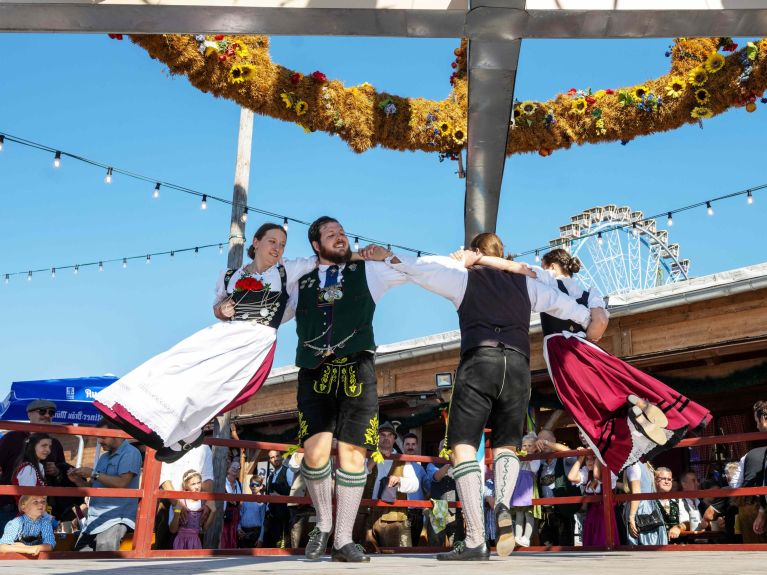The "Oide Wiesn" at the Oktoberfest
The “Oide Wiesn”, the traditional fairground at the Munich Oktoberfest, captivates visitors with the nostalgic charm of olden times.

Visitors have been gathering at the famous Theresienwiese venue since 1810, when nobody could foresee that it would become the world’s largest fair. In 2010, a historical fair was founded to provide visitors with nostalgic impressions of the traditional Oktoberfest. The “Oide Wiesn” (Old Oktoberfest) in the south of the Theresienwiese revives the atmosphere of the good old days. It offers an alternative to the huge razzmatazz of the neighbouring Oktoberfest, especially for families with children and older people. It focuses on Bavarian customs, Munich’s hospitality and traditional folk music. The “Tradition” festival tent is a good illustration: it adds an air of authenticity with tasty delicacies and traditional costume displays. The Oktoberfest beer is served in the established Keferloher, the classic grey stoneware tankard. Whip-cracking (Goasslschnalzer) and the Bavarian shoe-slapping dance (Schuhplattler) add to the atmosphere. The menu in the cosy “Herzkasperl” festival tent proves that the organizers are by no means old-fashioned.
Just like today, visiting the stalls and the travelling funfair attractions was all part of a great trip to the Wiesn in the 19th and 20th century. Guests can ride retro-style in the time-honoured Krinoline carousel or go for a topsy-turvy spin in the Hexenschaukel (Witches’ Swing). And there’s fun in store for both the bike riders and spectators with Juxradln (joke cycling) in the crazy Velodrome. If you are curious about the eventful lives of the travelling show people, the museum tent of the Munich Sideshow Operators’ Foundation offers interesting insights. Prices at the “Oiden Wiesn” are, however, up-to-date.
Dieses YouTube-Video kann in einem neuen Tab abgespielt werden
YouTube öffnenThird party content
We use YouTube to embed content that may collect data about your activity. Please review the details and accept the service to see this content.
Open consent form


